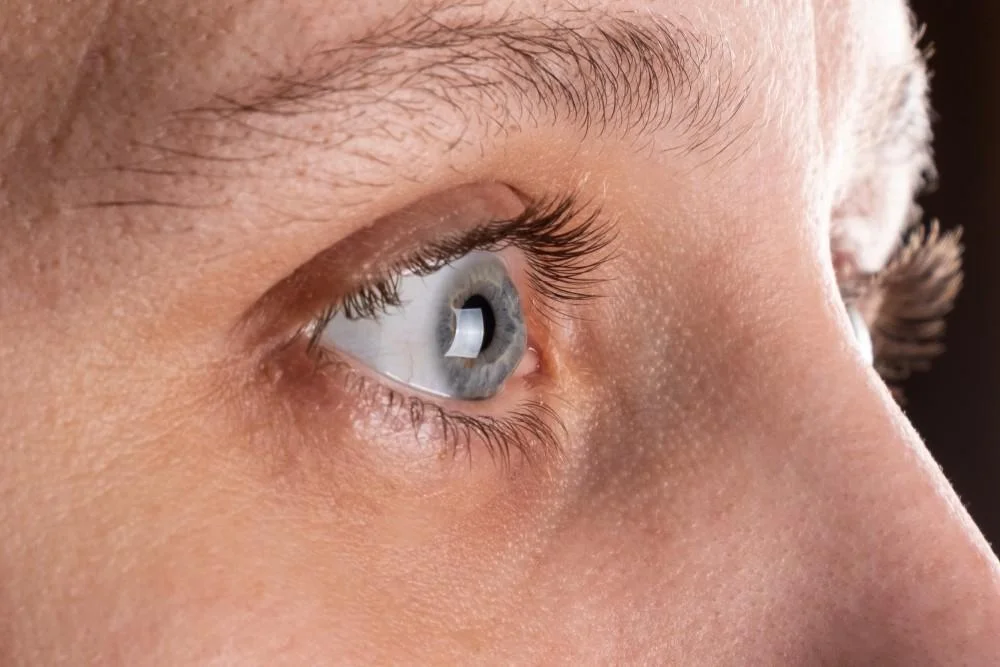The human eye is an intricate organ, and its outermost layer, the cornea, plays a pivotal role in clear vision. This transparent, dome-shaped surface focuses light into the eye, enabling us to see the world with precision. When the cornea becomes damaged or diseased, its clarity can be compromised, leading to significant vision impairment or even blindness. In such cases, a why would someone need a cornea transplant becomes a critical intervention, offering a chance to restore sight and improve quality of life. This authoritative guide delves into the various conditions that necessitate this complex yet highly successful surgical procedure, providing a comprehensive overview for patients considering this option.
Table of Contents
The Cornea: Guardian of Sight
To fully comprehend the necessity of a corneal transplant, one must first understand the cornea’s function. This remarkable tissue is not only transparent but also incredibly tough, protecting the eye from dust, germs, and other external threats. Its unique structure, devoid of blood vessels, allows light to pass through unobstructed, making it essential for proper light refraction onto the retina. When this clarity is lost due to injury, infection, or disease, the eye’s ability to focus light effectively diminishes, resulting in blurred vision, sensitivity to light, and sometimes pain. Conditions that compromise corneal health often progress, making timely intervention crucial.
Primary Reasons: Why Would Someone Need a Cornea Transplant?
A corneal transplant, also known as keratoplasty, involves replacing a damaged or diseased cornea with healthy corneal tissue from a donor. The decision to undergo this procedure is typically made when vision can no longer be corrected by glasses or contact lenses, or when painful symptoms become unmanageable. The primary conditions leading to this necessity are diverse, ranging from genetic disorders to infections and trauma. Understanding these underlying causes is fundamental to grasping why someone would need a cornea transplant.
Keratoconus: A Progressive Thinning
Keratoconus is one of the most common reasons for corneal transplantation, particularly among younger patients. This progressive eye disease causes the normally round cornea to thin and bulge into a cone-like shape. This irregular shape prevents the eye from focusing light properly, leading to distorted and blurred vision. Initially, glasses or specialized contact lenses can help, but as the condition advances, these aids become insufficient. Cross-linking procedures can slow progression, but once severe scarring or significant vision loss occurs, a transplant often becomes the only viable solution for restoring functional vision. Research has shown that keratoconus accounts for a significant percentage of corneal transplants globally, particularly in younger demographics where conservative treatments have failed or the disease has progressed rapidly.
Fuchs’ Dystrophy: Endothelial Cell Failure
Fuchs’ dystrophy is a genetic condition affecting the innermost layer of the cornea, the endothelium. These endothelial cells are responsible for pumping fluid out of the cornea, maintaining its transparency. In Fuchs’ dystrophy, these cells gradually die off, leading to fluid accumulation within the cornea, causing it to swell and become cloudy. This cloudiness results in blurred vision, especially in the mornings, and can lead to glare and halos. As the condition progresses, the swelling becomes permanent, and vision significantly deteriorates. For many individuals with advanced Fuchs’ dystrophy, a corneal transplant, often a partial thickness procedure called Descemet’s Membrane Endothelial Keratoplasty (DMEK) or Descemet’s Stripping Automated Endothelial Keratoplasty (DSAEK), is necessary to replace the unhealthy endothelial layer and restore corneal clarity.
Corneal Scarring: After Injury or Infection
Trauma, infections, and inflammation can leave permanent scars on the cornea. These scars, much like those on the skin, are opaque and obstruct the passage of light, leading to significant vision loss. Common causes include bacterial, fungal, or viral keratitis, often resulting from contact lens misuse or injuries. Severe chemical burns or lacerations to the eye can also lead to extensive scarring. Once scar tissue forms and vision is irreversibly compromised, a corneal transplant is the most effective way to remove the opaque tissue and replace it with clear, healthy donor tissue, thereby restoring visual acuity. This addresses directly why would someone need a cornea transplant due to irreversible damage.
Corneal Ulcers: Uncontrolled Infections
Corneal ulcers are open sores on the cornea, usually caused by bacterial, viral, or fungal infections. If not treated promptly and effectively, these ulcers can penetrate deeply, leading to severe scarring, thinning, and even perforation of the cornea. In cases of persistent, sight-threatening infections that do not respond to medication, or when the cornea is at risk of rupture, an urgent therapeutic corneal transplant may be performed. This procedure removes the infected tissue and replaces it with healthy donor tissue, saving the eye and potentially preserving vision. Understanding the severity of these infections highlights a critical reason for intervention.
Other Contributing Conditions
Beyond the most prevalent causes, several other conditions can necessitate a corneal transplant, each presenting unique challenges to corneal health.
Pseudophakic Bullous Keratopathy (PBK)
PBK is a condition that occurs after cataract surgery, where the delicate endothelial cells of the cornea are damaged during the procedure. This damage can lead to corneal swelling and clouding, similar to Fuchs’ dystrophy. While improvements in surgical techniques have reduced its incidence, PBK remains a significant cause of corneal transplantation, especially in older patients who have undergone complex or complicated cataract extractions. Patients often experience blurry vision and discomfort, necessitating a transplant to restore corneal function.
Failed Previous Corneal Transplants
Unfortunately, not all corneal transplants are successful long-term. A donor cornea can fail for various reasons, including graft rejection (when the recipient’s immune system attacks the donor tissue), infection, or glaucoma. When a previous graft fails and causes significant vision impairment or pain, a second or even third corneal transplant may be required. These re-transplants are generally more complex and carry a higher risk of rejection, but they offer the best chance for continued vision in these challenging cases.
Congenital Corneal Opacities
In some rare instances, individuals are born with cloudy corneas (congenital corneal opacities). These conditions, such as Peters’ anomaly or congenital glaucoma, can severely impair vision from birth and, if left untreated, can lead to permanent developmental vision loss. Early corneal transplantation in infants and young children can be crucial to provide a clear optical pathway, allowing for proper visual development. These specialized procedures require highly skilled pediatric ophthalmologists.
The Corneal Transplant Procedure
A corneal transplant is a delicate microsurgical procedure performed under local or general anesthesia. There are primarily two types of corneal transplants:
Penetrating Keratoplasty (PK)
PK, or full-thickness corneal transplant, involves removing the entire central portion of the diseased cornea and replacing it with a full-thickness donor cornea. The new cornea is then carefully sutured into place. This procedure is typically used for conditions affecting all layers of the cornea, such as severe keratoconus with scarring, extensive corneal scarring, or significant corneal thinning. While effective, PK generally has a longer recovery time and a higher risk of complications compared to partial-thickness transplants.
Lamellar Keratoplasty (Partial-Thickness Transplants)
Lamellar keratoplasty techniques involve replacing only the diseased layers of the cornea, preserving the healthy layers. This approach significantly reduces the risk of graft rejection and complications, leading to faster visual recovery. These include:
- Deep Anterior Lamellar Keratoplasty (DALK): This procedure replaces the outer and middle layers of the cornea (stroma) while preserving the healthy inner endothelial layer. DALK is often preferred for conditions like advanced keratoconus or corneal scarring where the endothelium is healthy. It offers advantages such as a lower risk of rejection and faster healing compared to PK.
- Descemet’s Stripping Automated Endothelial Keratoplasty (DSAEK) / Descemet’s Membrane Endothelial Keratoplasty (DMEK): These procedures are used for conditions affecting primarily the innermost endothelial layer, such as Fuchs’ dystrophy or pseudophakic bullous keratopathy. Only the diseased endothelial cells and Descemet’s membrane are removed and replaced with a thin layer of healthy donor endothelium. DMEK involves an even thinner graft than DSAEK, leading to faster visual recovery and excellent outcomes, though it is technically more challenging.
The Role of Medical Research
Continuous advancements in medical research have significantly improved the outcomes and reduced the complications associated with corneal transplantation. A study published in *Ophthalmology* by Lee, H. B., et al. (2018) highlighted the evolving trends in corneal transplantation. Their findings indicated a shift from traditional penetrating keratoplasty towards lamellar techniques, particularly for endothelial disorders, citing improved visual outcomes, lower rejection rates, and faster rehabilitation. The research underscored the importance of tissue-engineered corneal grafts and novel immunosuppressive strategies in further enhancing transplant success and expanding the pool of viable donor corneas, ultimately offering better prospects for patients who need a cornea transplant.
Recovery and Post-Operative Care
Recovery from a corneal transplant can vary depending on the type of procedure and individual patient factors. Patients typically require close follow-up with their ophthalmologist, often involving frequent eye drop regimens to prevent infection and rejection. Visual recovery can be gradual, sometimes taking several months to a year, especially after full-thickness transplants. Patients are advised to avoid strenuous activities and protect their eyes from injury during the initial healing period. Adherence to post-operative instructions is critical for the long-term success of the graft.
Cornea Transplant Cost Comparison: Turkey vs. United Kingdom
For international patients, particularly those from the United Kingdom, considering medical treatment abroad, the cost of a corneal transplant is often a significant factor. Turkey has emerged as a leading destination for medical tourism, offering high-quality procedures at a fraction of the cost found in many Western countries, including the UK. This price difference allows patients to access advanced care without compromising on quality.
| Service/Item | Turkey Price (GBP) | United Kingdom Price (GBP) |
|---|---|---|
| Full Cornea Transplant (PK) | £3,500 – £6,000 | £10,000 – £15,000 |
| Partial Cornea Transplant (DSAEK/DMEK) | £3,000 – £5,500 | £9,000 – £14,000 |
| Pre-op Consultation & Tests | £150 – £300 | £400 – £800 |
| Post-op Follow-up (Initial) | £100 – £200 | £300 – £600 |
*Prices are approximate and can vary based on the specific clinic, surgeon, and complexity of the case. They typically include the procedure, hospital stay, and initial follow-up.*
CK Health Turkey: Your Partner for Advanced Eye Care
At CK Health Turkey, we understand the profound impact that vision problems can have on your life. We are dedicated to providing international patients, including those from the UK, with access to world-class medical treatments, including specialized eye surgeries and corneal transplants. Our partner hospitals boast state-of-the-art facilities and experienced ophthalmologists who utilize the latest techniques, such as DALK, DSAEK, and DMEK, to ensure the best possible outcomes. We pride ourselves on offering comprehensive care packages that cover everything from initial consultation to post-operative support, ensuring a smooth and stress-free medical journey. Patients seeking treatments ranging from specialized LASIK recovery and expert dry eye treatment strategies to complex reconstructive procedures will find our services exemplary. Beyond eye care, we also offer a wide range of other medical services, from hair transplant solutions to advanced plastic surgeries like face and neck lifts in Turkey, catering to a diverse set of patient needs. We are committed to making high-quality healthcare accessible and affordable.
We invite you to reach out to CK Health Turkey for a personalized consultation. Our team is ready to discuss your specific needs, provide detailed information about cornea transplant procedures, and help you plan your treatment journey with confidence. Visit our website or contact us today to take the first step towards restoring your vision.
Numerous conditions, from genetic predispositions like keratoconus and Fuchs’ dystrophy to acquired damage from infection or trauma, can severely compromise corneal clarity and necessitate surgical intervention. For individuals experiencing significant vision loss or discomfort due to corneal damage, understanding why would someone need a cornea transplant is the first step towards restoring their sight and improving their overall quality of life. With advancements in surgical techniques and accessible, high-quality care options in destinations like Turkey, a future with clear vision is within reach for many.
FAQs
What is a cornea transplant?
A cornea transplant, or keratoplasty, is a surgical procedure to replace a damaged or diseased cornea with healthy corneal tissue from a donor. It aims to restore vision and alleviate pain caused by corneal conditions.
How long does a cornea transplant last?
Corneal grafts can last for many years, often a lifetime. However, factors such as the patient’s age, the underlying condition, and adherence to post-operative care can influence the graft’s longevity. Some patients may require a second transplant in the future.
Is a cornea transplant a painful procedure?
The surgery itself is performed under anesthesia, so you will not feel pain during the procedure. After surgery, some discomfort, irritation, and sensitivity to light are normal and can be managed with prescribed pain medication and eye drops.
What are the risks associated with a cornea transplant?
As with any surgery, there are risks, including infection, bleeding, glaucoma, cataract formation, and retinal detachment. The most significant risk is graft rejection, where the body’s immune system attacks the donor cornea. However, advancements in surgical techniques and immunosuppressive eye drops have significantly reduced these risks.
How long is the recovery period?
Recovery varies depending on the type of transplant. For partial-thickness transplants (DSAEK/DMEK), visual recovery can be relatively quick, sometimes within weeks to a few months. For full-thickness transplants (PK), full visual recovery can take several months to a year or more as the eye heals and sutures are gradually removed.
Will I need special care after the surgery?
Yes, post-operative care is crucial. You will need to use prescribed eye drops (antibiotics, steroids) for an extended period to prevent infection and rejection. Regular follow-up appointments with your ophthalmologist are essential to monitor your healing and adjust medication as needed. You will also need to protect your eye from injury.
Can I drive after a cornea transplant?
Driving ability will depend on your vision in the operated eye and the laws in your country. You should not drive immediately after surgery. Your surgeon will advise you when it is safe to resume driving based on your visual acuity and recovery progress.
Is donor tissue readily available for cornea transplants?
In many regions, donor corneal tissue is generally available through eye banks. The waiting time can vary based on your location and specific needs, but it is typically not as long as for other organ transplants due to a greater supply of donor corneas.
How do I know if I am a candidate for a cornea transplant?
Your ophthalmologist will conduct a thorough examination of your eyes, including visual acuity tests, corneal topography, and other diagnostic procedures, to determine the extent of corneal damage and if a transplant is the most appropriate treatment option for your specific condition.
What is the success rate of cornea transplants?
Cornea transplants have a high success rate, with many patients experiencing significant improvement in vision. The success rate varies depending on the underlying condition, the type of transplant, and whether it’s a first-time or re-transplant, but overall, it remains one of the most successful organ transplant procedures.



